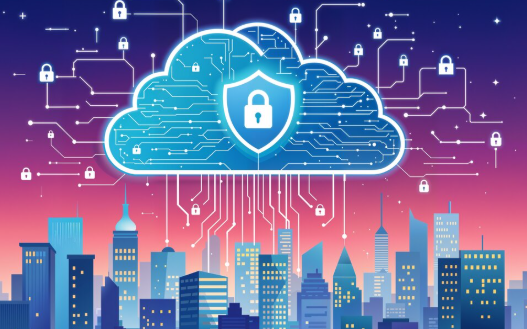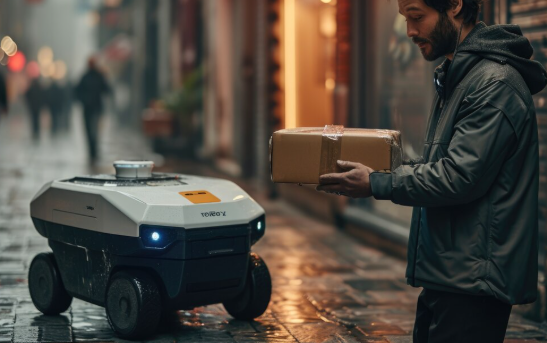An ever-expanding and interconnected digital landscape is also more vulnerable. Take the 2017 Equifax data breach for example, which exposed the PII (Personal Identification Information) of more than 145 million people. Instances like this highlight the dire need for cybersecurity and the importance of keeping up with the cybersecurity trends in the modern data-driven world.
But what lies ahead in the ever-evolving saga of cybersecurity? Let’s discover the ten most prominent trends that are set to shape the future of digital security in 2023 and beyond.
#1 – The Growing Threat Landscape
The digital realm is experiencing unprecedented growth in cyber threats. Not only is the volume of attacks on the rise, but their sophistication is also evolving at an alarming pace. Attackers are continually discovering new ways to breach systems and exfiltrate sensitive data, making this cybersecurity trend one of the most important ones to keep track of.
This escalating threat landscape necessitates a shift from a reactive to a proactive cybersecurity strategy. Organizations must be prepared to detect and respond to threats in real-time, employing advanced threat intelligence and analytics.
The threat landscape of the digital realm is akin to the ever-expanding universe, with countless perils lurking in the cosmic void. As per Cybercrime Magazine, cyber threats are estimated to cost the world $10.5 trillion globally by 2025 (Source: Cybercrime Magazine). Ransomware, phishing, and insider threats, akin to the recurring villains in our story, remain persistent challenges. Ransomware attacks, in particular, showed an alarming 105% year-over-year increase.
#2 – Emerging Technologies and Their Challenges
The rapid integration of emerging technologies, such as quantum computing, 5G networks, and edge computing, brings about a host of new cybersecurity challenges. Quantum computing, for example, has the potential to break current encryption methods, prompting the need for post-quantum encryption techniques.
As 5G networks and edge computing become more prevalent, they create larger attack surfaces, requiring a reevaluation of network security and the development of new defense strategies. Organizations must stay proactive in understanding these challenges and adapting their cybersecurity measures accordingly.
#3 – The Impact of Hybrid Working Models
The unprecedented era of remote work ushered in by the COVID-19 pandemic has transformed the very landscape of our story. However, the shift to remote work came with its own share of challenges.
The weak link in the armor of organizations in our tale is the threat posed by employees using non-secured devices while working from home. These challenges associated with this cybersecurity trend must be surmounted to ensure the safety of the digital realm.
#4 – State-Sponsored Attacks
As our story unfolds, we confront a menacing presence on the global stage. State-sponsored cyberattacks have become more prevalent, with a 67% increase observed in 2022.
2023 Outlook: The malevolent intent behind state-sponsored attacks is expected to persist, with cybersecurity experts predicting a further 20% increase in these incidents. The plot thickens as nations employ cyber capabilities to achieve political, economic, and military objectives.
#5 – Internet of Things (IoT) and Cloud Security
The Internet of Things (IoT) is an ever-expanding universe, where an estimated 29.42 billion connected devices are projected to exist in 2030 (Source: Statista). These devices introduce more potential entry points for cybercriminals, like hidden traps in the labyrinth.
The proliferation of Internet of Things (IoT) devices and the extensive use of cloud services in business operations raise significant security concerns. IoT devices are notoriously vulnerable due to their limited computing resources, often lacking essential security features.
#6 – AI and Machine Learning in Cybersecurity
The AI revolution is upon us. AI and ML have emerged as the powerful allies of our heroes, promising to turn the tide of the battle. The role of AI and ML in cybersecurity is destined to expand. These technologies are set to reduce the time taken to detect threats and improve incident response time.
#7 – Regulatory Compliance and Privacy Concerns
Regulatory compliance is the labyrinthine maze that organizations must navigate to ensure the safety of their digital realms. Among the various cybersecurity trends, privacy concerns and data protection regulations are critical elements that every business utilizing digital technologies must be mindful of.
Regulatory compliance has become critical for cybersecurity strategies, with non-compliance leading to implications like
- hefty fines
- lawsuits
- reputation damage
#8 – Responsive Ecosystems, Restructuring Approaches, Rebalancing Practices
The adoption of Secure Access Service Edge (SASE), the zero-trust philosophy, and identity-first security are the strategies cybersecurity specialists employ to reshape the cybersecurity landscape.
These trends are the revolutionary tools used by cybersecurity experts, guiding them to a proactive, holistic, and identity-centric approach to defending digital networks worldwide.
#9 – The Cyber Security Skills Crunch
The skills gap in enterprises when it comes to cybersecurity remains a pivotal challenge. Most companies have felt the brunt of employees who lack the necessary skills after the COVID-19 pandemic.
To address this shortage in one of the primary cybersecurity trends, organizations have embarked on a quest to bridge the gap. They are increasing salaries for cybersecurity professionals and investing heavily in training, development, and upskilling programs to keep up with the rapid pace of advancing cyber threats.
#10 – Generative AI Adopted On Both Sides of The Battle
Nobody is left untouched by the use of Generative AI in today’s world. AI, now more sophisticated than ever, plays a dual role in cybersecurity – both as a formidable adversary and a guardian angel.
Industry experts anticipate that AI will be adopted for both offense and defense. AI-powered attacks are becoming smarter, from deepfake social engineering to automated malware that adapts intelligently to evade detection. Simultaneously, AI will aid in building a better security posture through real-time anomaly detection, smart authentication, and automated incident response.
The Future Needs to Be Secured Today
Cybersecurity is a continuous battle between the good and the bad. As we end 2023 and move beyond, the danger posed by the threat actors has never been greater. To succeed, enterprises must adapt, innovate, and collaborate, using every weapon in their arsenal to protect their digital networks from relentless cyber threats.
For enterprises that are unable to keep up with cybersecurity trends and secure their network themselves, partnering with Cybersecurity specialists like STL Digital can help them build a robust security ecosystem and thwart all attempts of digital sabotage.



